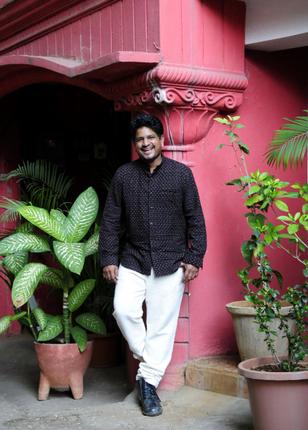Hand spun or power loom, Sangeetha Devi Dundoo finds that the freedom fabric is enjoying its space in the sun this summer.
Summer normally spells good business for khadi sellers and this summer is turning out to be even better. The stores that dot Lakdi-ka-pul and Khairatabad have stocked both handloom and powerloom khadi yardage, along with linen and cotton to meet the demand from political campaigners. The stores placed orders for fresh stock two to three months ago to ensure they have enough supply.
There’s khadi to meet every budget. The hand-spun and hand-woven variety from Ponduru comes at a premium. “Very few families weave khadi in Ponduru and most weavers are in the 60-plus age group. It takes them at least two months to weave a ‘taan’ (roll),” explains Dasari Chandra Shekhar of Khadi Bhandar, Khairatabad.
Dealers emphasise the need to stock cheaper alternatives like powerloom khadi from Erode, Tirupur, Salem and Mumbai. “Not everyone is particular about using hand-spun, hand-woven khadi especially when they need at least 15 to 20 sets of garments. We’ve seen corporators and others buy powerloom fabrics while the established politicians go for premium handloom khadi. They choose between muslin, coarse or fine khadi,” adds Shekhar.
Khadi from Ponduru finds more takers, says Vinay of Andhra Khadi Bhandar, Lakdi-ka-pul. “The handloom varieties come from Srikakulam and Ponduru, priced between Rs. 200 and 2,000 per metre, depending on the yarn used. As an alternative, there’s the lesser-known hand-woven khadi from West Bengal priced at Rs. 500 to 800 per metre,” he says.
White is the preferred colour cutting across party lines. The difference in colour is marked by the shawl/stole worn on the shirt. A bulk of the sales remains skewed towards men as most women in politics remain comfortable in cottons and silks.
A few stores also have in-house tailors who can stitch shirts and trousers within a week. Ready-to-wear garments are available for those unwilling to wait. Besides shirts, trousers and fabrics, the stores also have special hand-made or non-detergent soaps to wash these garments with. They assert the importance of using home-made starch over the retail variety for the longevity of the fabric.
In the mean time, linen has emerged as an alternative to khadi, offering a wider range of fabrics, priced between Rs. 500 and 4000 a metre. “Linen is lustrous and is equally comfortable for summer. We’ve had quite a few political clients asking for linen,” says Chandra Shekhar.

De-constructing an image
Designer Aravind Joshua who works extensively with khadi weavers and uses the fabric for his creations, feels clothing is a key to understand leaders and the image they project in public space.
“On close analysis, one would find what leaders wear is not by accident. Behind the crisp khadis and handlooms that Indira Gandhi wore, there were image consultants, stylists and designers. When Sonia Gandhi entered politics, she carefully imitated both the body language of Indira and her wardrobe. From Mahatma Gandhi to Narendra Modi, our leaders know that even when they are not talking, their clothing is. It’s a visual communication,” he says.
Aravind’s suggestions to five politicians who could do with a change of style
Most women ministers: It’s surprising how even women in influential positions can get carried away. D.K. Aruna and Geeta Reddy can take a cue from Sonia Gandhi, Priyanka Gandhi, Kumari Selja or Sushma Swaraj.
Kalvakuntla Kavitha: Kavitha, to stay in tune with the cultural wing of her party which she represents, is never seen wearing handloom or khadi woven in this region. She could have more Pochampally ikats and Narayanpet saris in her wardrobe.
Jaganmohan Reddy: Jagan’s corporate look continues while meeting people. Instead of wearing high-end brands while speaking about the plight of the weavers or farmers, he can opt for a well-constructed kora or a striped khadi shirt and pant. Since he is targeting youth, it is not necessary for him to sport a dhoti like his father.
Nara Lokesh: Like his father, Lokesh is projecting himself as a thinker so we see him in formal shirts and pants. But if he is going to be active in politics, he can try matkha khadi silk (available in shades of yellow to gold, befitting his party flag) shirt, crisply ironed with white coated khadi pants.
D. Sridhar Babu: He sports a waist coat over white kurta and pants. To connect strongly with his constituency, Karimnagar, he can try Metpally khadi tie and dyed waist coat with white double thread khadi.
source: http://www.thehindu.com / The Hindu / Home> Features> MetroPlus / by Sangeetha Devi Dundoo / Hyderabad – April 04th, 2014